With the Strategic Defence and Security Review not being out very long, let’s take a look at the effect it will have on our air force.
Personnel will be increased by 300.
Typhoon will be retained for an additional ten years (until 2040) and will receive upgrades. Two additional squadrons will be stood up, bringing the total number of frontline Typhoon squadrons to seven by 2025. Tranche 1 Typhoons will form these additional squadrons with around 12 planes per aircraft.
There was a reaffirmed commitment to 138 Lockheed Martin F-35 Lightning IIs (with a total of 24 available to be deployed on board the Queen Elizabeth class carriers by 2023).
Nine Boeing P-8 Poseidon maritime patrol aircraft will be ordered to plug the gap left by the retirement of the Nimrod in 2011 and the scrapping of its successor, the Nimrod MRA4. The aircraft will be based at RAF Lossiemouth.
The RPAS fleet will be doubled with the current 10 General Atomics MQ-9 Reapers to be replaced by more than 20 new armed “Protector” RPAS.
Fourteen C-130J Hercules aircraft will remain in service alongside 22 Airbus A400M Atlas and 8 Boeing C-17 Globemaster III.
Fourteen Voyager air-to-air refuelling aircraft will be in service by 2025, with one fitted for transport of the Prime Minister, senior cabinet officials and the Royal Family.
Around four Sentinel R1 will be extended in service “into the next decade”, but will leave service by 2025.
Shadow R1 will remain in service until “at least” 2030 and two more aircraft will be procured.
Sentry AEW1 and Rivet Joint R1 will remain in service until 2035.


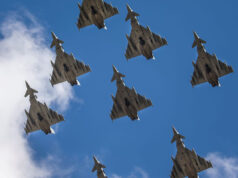

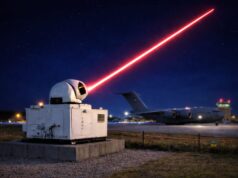
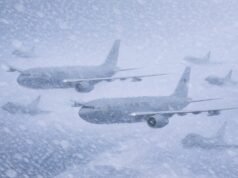
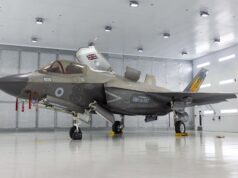
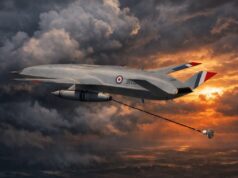
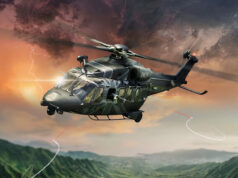




I think that the SDSR has been pretty good for the RAF in particular and not bad at all generally, although some might say it is repairing the damage done in 2010.
The Voyager’s will be in full service by 2016 not 2025, by the way.
12 planes per aircraft?
The F35 decision is a bit weak though. 24 planes by 2023 for the carriers, which means 12 per carrier assuming that every jet is in service and none require maintenance etc, so more likely 6-8.
Don’t forget that the F-35’s are a joint RAF/RN Force with the first operational squadron being based at RAF Marham.
They’re currently scheduled to start ship trials towards the end of 2018, aiming to become operational on HMS Queen Elizabeth around 2020.
HMS Prince Of Wales will be at least 3 years later.
By 2019 the F-35 production costs will be much less so we’ll probably see the procurement of the aircraft in stages to save money. The F-35’s capabilities will also be improving over that period.
However, the carriers will be operating with a mixed air wing so there will be a lot of rotor wing aircraft on board as well as the F-35’s, don’t expect them to be operated the same way the US Navy do, they can’t accommodate the same amount of aircraft and we don’t have enough carriers so our’s need to be more flexible in their operations.
Steve, there will only be one carrier in service at any one time. Standard Complement of F35’s will be 12 with more added if needed should the situation warrant it.
Im pretty sure its 42 f35s by 2023 meaning 24 will be available for the carriers
Either way, we currently don’t seem to be able to deploy double digit number of tornados, so 10 F35’s would be a bonus on what we currently have.
As long as ISIS are very patient, the British carrier based rapid reaction force will be right with them.
Well said! I think there are many promises about jam tomorrow, but not when the government will actually sign contracts and order all this new equipment.
The current lack of operational carriers and aircraft along with no maritime aircraft due to cuts made not so long ago begs the questions why was the equipment we had so hastily abandoned and if we are able to manage without all those pieces of equipment now,why are we replacing them ?
Furthermore why are we buying American Equipment?
Because we can’t afford the development costs alone. Why did we develop Tornado with the other partner nations or more recently the Typhoon.
Unless the great British public want to stump up billions more in tax to spend on defence, we need to buy what we can afford.
The carrier capability will be 24 F35b aircraft running up to 2023 with 39 in surge conditions. ISIS need to be tackled in a variety of ways, air strikes are just part of the solution. As for the silly and juvenile comment about ISIS waiting for the UK carrier group to be formed, carriers give a nation flexibility which is why we are building them. No one can know what threat we may face in five or ten years, which is why we need balanced forces.
@Jack
It was a joke. But as things stand ISIS will still be around in 2023 unless Russia decides to stop them. The US and NATO nations are bruised from Afgan/Iraq and so they won’t commit ground forces (not that I think it would be wise to do so, considering we don’t have a viable exit strategy), which means we are relying on other middle eastern countries to do the hard work, which won’t happen whilst Russia is busy bombing Bombing anyone that doesn’t support their view of the area. Realistically there is no one currently on the ground that can stop them.
So either Russia decides to act with the west and we get the other middle eastern countries involved or Russia launches an all out ground offensive to support the current government, either way its down to Russia to decide the fate of ISIS.
Whether we commit 1 bomber or 100, in my opinion it doesn’t change this formuala and if anything the more bombers will probably just make the matter worse as it encourages more extremists, unless they can see a viable future without it.
I am stunned by the cut backs in the RAF. Currently we have only 5-6 typhoon squadrons , 12 in each. That’s only about 60 front line air defence aircraft for the whole country. Embarrassing . Governments should be ashamed. The amount of bases closing is just as embarrassing. No doubt in times of trouble, we will be asking these brave, very few, to do their duty.
I wholeheartly agree with Christopher, the RAF (and the Navy) is being really hammered by this government. While transport and Refuelling aircraft asetts are not too bad, our frontline fighter aircraft are too few to worry any serious agressor.Also, what I cannot understand when I read in my aircraft magazines that India can afford to buy large quantities of different types of aircraft on a regular basis, plus they have a space programme!. How can they afford all this when they are supposed to be poor! , and more to the point, the UK is giving them millions of £s in overseas aid – what is this money being spent on?
Lt Col I.R.Berchem (RE Ret’d) We should scrap the RAF entirely and hand its strike aircraft (the F35’s) to the Fleet Air Arm – the Typhoons are a joke, helicopters split between Navy and Army Air Corps, logistic aircraft operated by the Royal Logistics Corps and hired from commercial sources as necessary, drones operated by the Royal Artillery and Sigint aircraft controlled by Royal Signals. The Defence Budget savings would be enormous. I agree that 12 F35’s per carrier is ridiculous and I would be keen to know what RAF personnel, in this era of naval manpower shortage, will contribute to the day-to-day running of the ship; they can’t expect simply to be passengers between flying duties.
The Secretary of State for War in 1957, Duncan Sandys, said that the fixed-wing combat aircraft is now obsolete and here we are, 60 years later, trying to justify their continued existence; technology has overtaken them, the drone is the future and the F35 is already a museum piece.